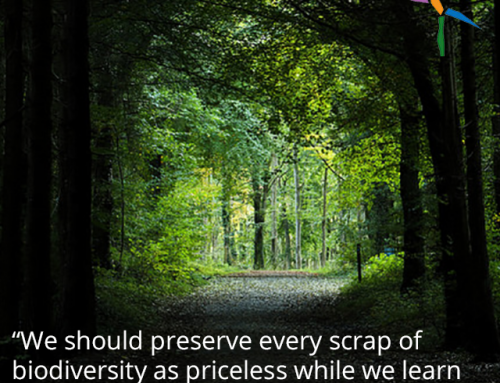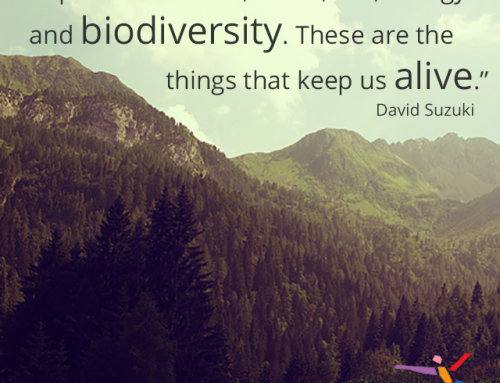One of our favorite tips for how to have an eco-friendly Valentine’s Day is to stay in and cook instead of going out to a restaurant (though if you do choose to eat out, we’ve got tips on how to consume less at a restaurant). But even cooking at home can mean that your Valentine’s Day menu is more … or less … eco-friendly. Here are some tips for making sure that your Valentine’s Day meal for your sweetest one is still sweet to the planet.
Tip One: Shop Locally. Buy Organic. Buy Fair Trade. Maybe Even Share the Experience.
The relationship between your food and the planet starts the minute that you decide where and what you’re buying (or harvesting) for your meal. In some ways, how you prepare your food and how much waste you generate may have a larger impact on your carbon footprint, but you have the most opportunity to make smart choices and make a difference globally with what and where you buy. Opt for your local “green” grocery or, better yet, a farmer’s market. Whenever possible, buying organic is as important as buying locally. While organic (and non GMO) food is better for you and the planet, the real culprit when it comes to food and carbon emissions is the food miles behind transporting the food from far away origins to your local grocery. When it comes to items like after-dinner coffee and the Valentine’s essential of chocolate, look for fair trade products.
While making dinner and surprising your sweetie is romantic, you may even want to consider doing the shopping together. Especially if you are buying your food at a farmer’s market, the experience of the sights, sounds and smells can be a romantic event all on its own.
Tip Two: Consider Going Meat Free for Valentine’s Day (There’s a Secret Extra Benefit)
The carbon footprint of any meal that includes meat is often primarily about the carbon footprint of the meat, which is massive. We took a look last year at the carbon footprint of a holiday meal and 60% of the carbon emissions were from the turkey alone! The carbon footprint of meat involves many, many steps before the meat ever hits your table. There’s the energy involved in keeping the animals, the energy involved in growing and creating feed for the animals, the energy involved in slaughtering the animals, the energy involved in processing the meat, in transporting and in refrigeration. And, of course, we’re all aware that cows in particular can produce a planet-impacting amount of methane. There are plenty of lush vegetarian recipes that you can use for your Valentine’s Day meal. There’s also an added benefit to a meat-free Valentine’s Day meal. You’ll feel less “full and heavy” after dinner, which will give you more energy for the truly important Valentine’s Day activities!
Tip Three: Think Out-of-the-Box About Buying Locally
We’ve already talked about how it’s important to purchase your groceries as locally as possible, but you don’t need to stop there. Are you having chocolate for Valentine’s Day? Chances are that it’s high on your list. Look for local chocolate makers or crafters to purchase from. Closing dinner with coffee? Chances are that your beans are imported, but you can look for local roasters. Finally, many cities (and even smaller towns) have a wide variety of local beer brewers, wineries and even spirit distillers. When possible, buy your Valentine’s Day booze locally as well.
Tip Four: Don’t Buy Special Decorations (At Least Don’t Buy them First-Hand)
Wanting to “spruce up” your place before your big Valentine’s Day dinner is just fine. But think through the environmental impact of the decisions that you make. Fresh flowers are a great option (especially if you can confirm they were greenhoused and grown locally), but one-time paper decorations are not. Sure, that sparkly “I love you” banner looks great in the store, but what are you going to do with it after Valentine’s Day? Stay away from buying paper plates and plastic champagne glasses that you’ll just be discarding after Valentine’s Day. However, you may be able to find some great Valentine’s Day decorations in your local thrift or consignment store. Decorating and creating an atmosphere is fantastic, just be wise about how you do it.
Tip Five: Share Your Love and Your Food
Food waste in America is simply out of control, and nobody’s denying it. Combine that with the fact that more Americans than ever need to rely on food pantries and you’ve got just one crazy state of society. If you’re lucky enough to be in a position to prepare a nice Valentine’s Day meal, take the opportunity to think about those less fortunate than you as well. Purchase some food pantry essentials as well as a few extra treats that those going through a rough spot may not have the opportunity to enjoy and drop them off at your local food pantry. Food tastes better and love lasts longer when you’re giving back as well as getting.
Valentine’s Day doesn’t have to be a commercial holiday where people spend money they don’t have on items they don’t need. Everybody needs to eat, and creating a sensual Valentine’s Day meal with a small emphasis on social clarity can turn a greeting card holiday into something much more special.
Photo Credit: Samantha Celera via Flickr





